In the Making: looking at the materials and process behind Carolina Palombo’s Tutura chair
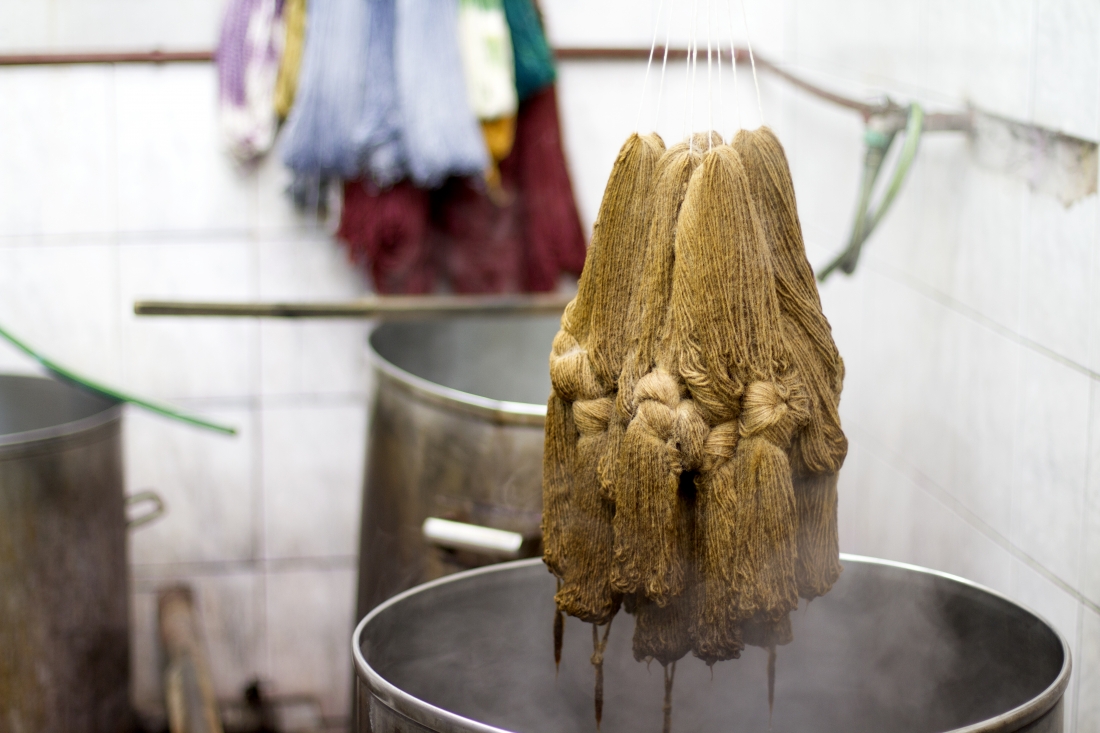
Dyed local wool
Low, with a broad, wool-encased seat and a wide back made from braiding the leaf of a bullrush sedge native to Uruguay called totora, Carolina Palombo’s Tutura chair is a perfect mix of bold form, artisanal technique and social enterprise.
It was designed especially for upcoming London Design Festival show Hilos Invisibles, which opens at The Aram Gallery this month and exhibits the work of seven Uruguayan design studios inspired by the legacy of Montevideo architect Julio Vilamajó Echaniz.
It’s been masterminded by Uruguay-born, London-based designer Matteo Fogale, and is a result of his residency at the Museum Casa Vilamajó. There, he ran week-long workshops with seven Montevideo practices – Carolina Palombo, Claudio Sibille, CLARO, Menini-Nicola, Muar, Studio Diario and Rafael Antía – to collaboratively develop seven new products inspired by Vilamajó’s sketches and blueprints.
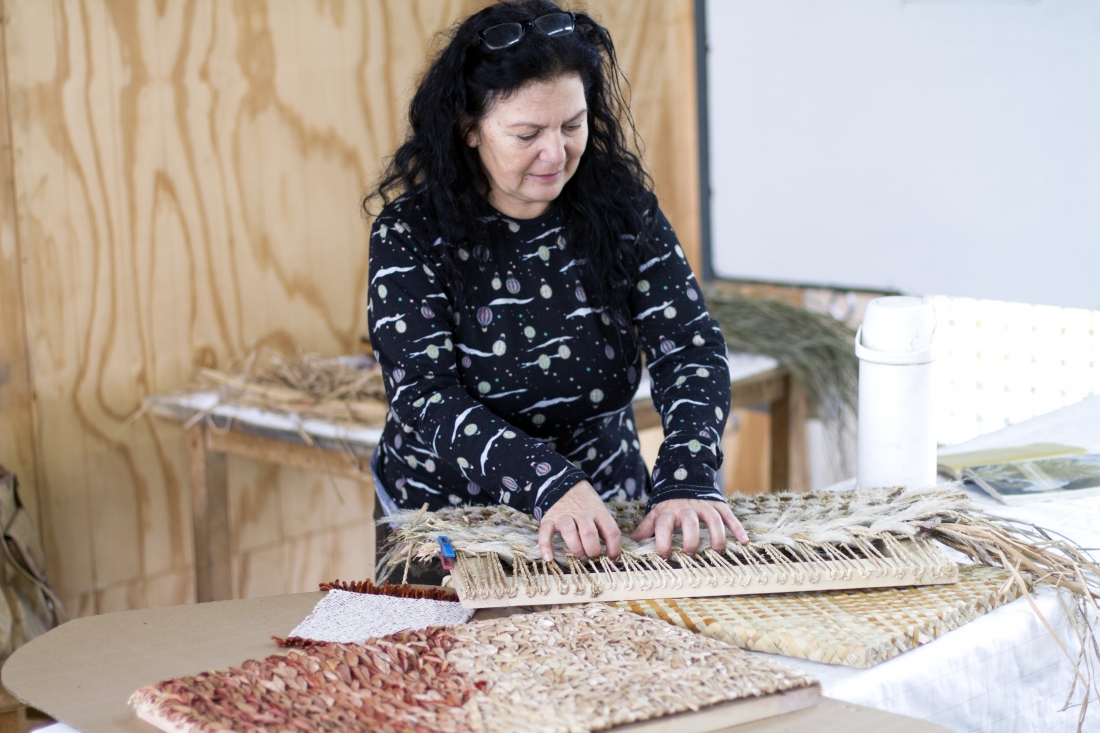
Uruguayan artisian Graciella Miller from Pan de Azúcar, Maldonado
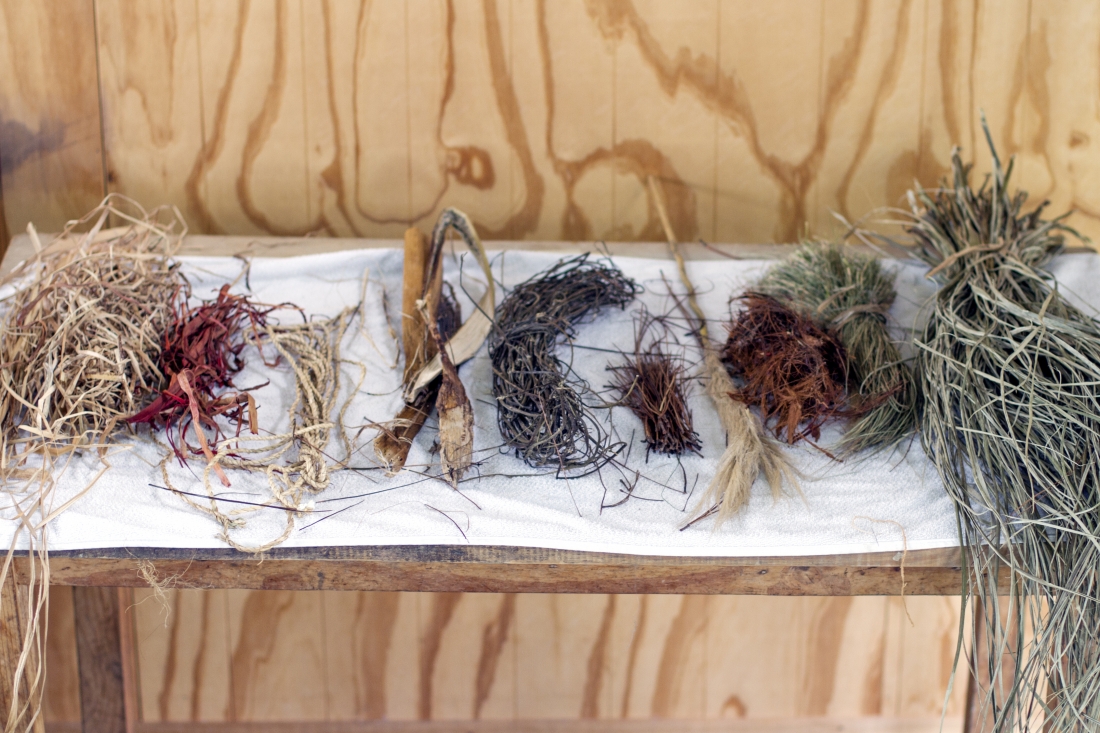
Dyed totora, a leaf native to the country
Carolina herself took inspiration from Vilamajó’s hostel and restaurant Ventorrillo de la Buena Vista, which he designed in 1945. Much like Montevideo-based designer Carolina, whose artisanal, craft-focused approach has seen her create furniture through to houses, offices and a kindergarten, Vilamajó worked at a variety of scales.
Located on the slope of the Villa Serrana mountains, his Ventorrillo de la Buena Vista building was made entirely from local materials like stones, straw and wood with big windows. "It feels that nature comes inside the building," says Carolina. "Big windows leaning forward at the front of the building let you enjoy the landscape as if it was right inside the premises. With my piece, Tutura, traditional and local materials come inside the house with elegance, simplicity and comfort."
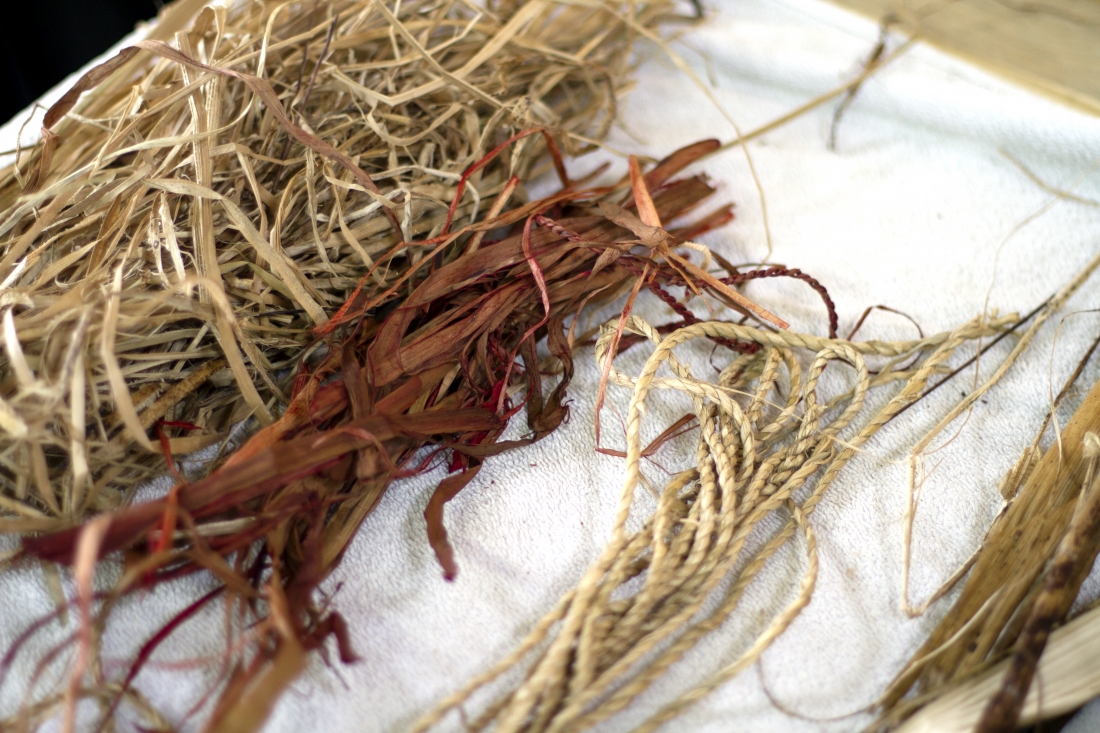
Dyed totora, a leaf native to the country
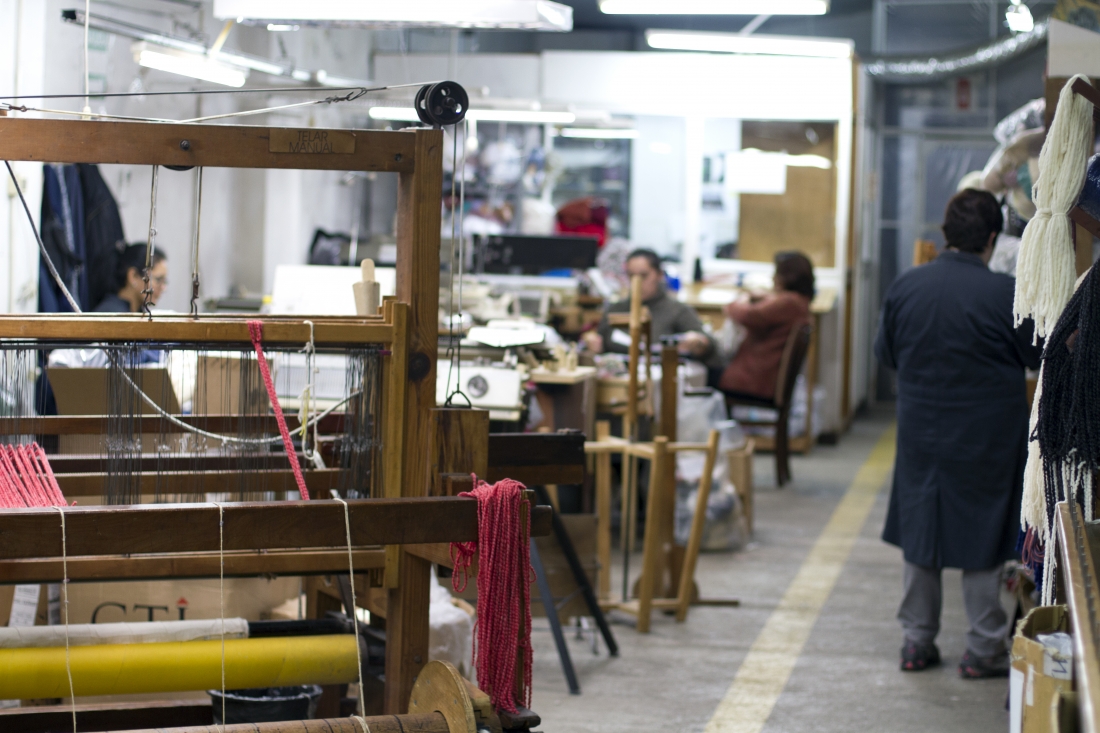
Inspired by Vilamajó’s used of local materials, the chair is made from Peterebi wood from Paraguay, dyed and braided totora, a leaf native to the country (the chair’s name Tutura is the word for the totora leaf in Quechua, the language of the Inca empire), and features a seat covered with a bespoke hand-woven wool, also knitted by local weavers from Manos del Uruguay, a collective supporting women from rural areas in Uruguay. "The chair was designed so that two people can sit on it. The back alludes to the rusticity of native materials yet with a twist," says Carolina.
The knitted totora back was made in collaboration with Uruguayan artisan Graciella Miller from Pan de Azúcar, Maldonado. The challenge was to make it resistant, durable and yet very attractive. "Graciella made three different kinds of knitting prototypes," explains Carolina. "Together with Matteo, we chose the one that most suited the chair’s spirit. We wanted something singular and yet resistant and attractive. The idea of colouring the totora made it possible to bring something traditional and native into the modern age, which would match with the seat upholstery."
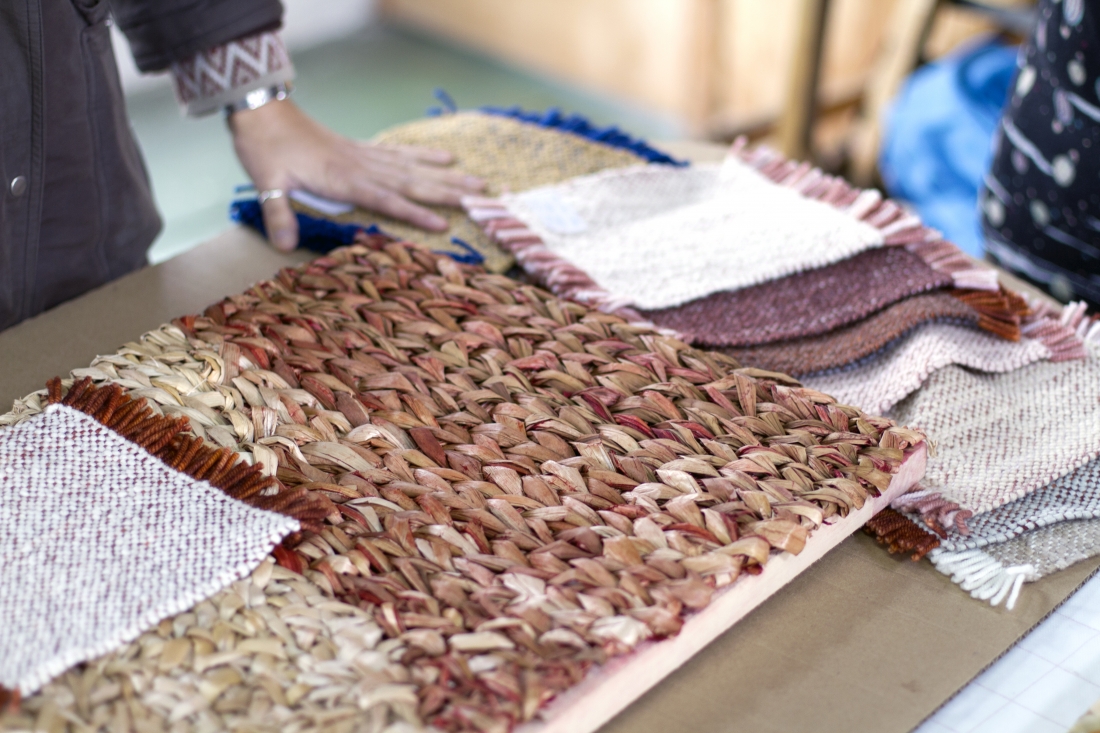
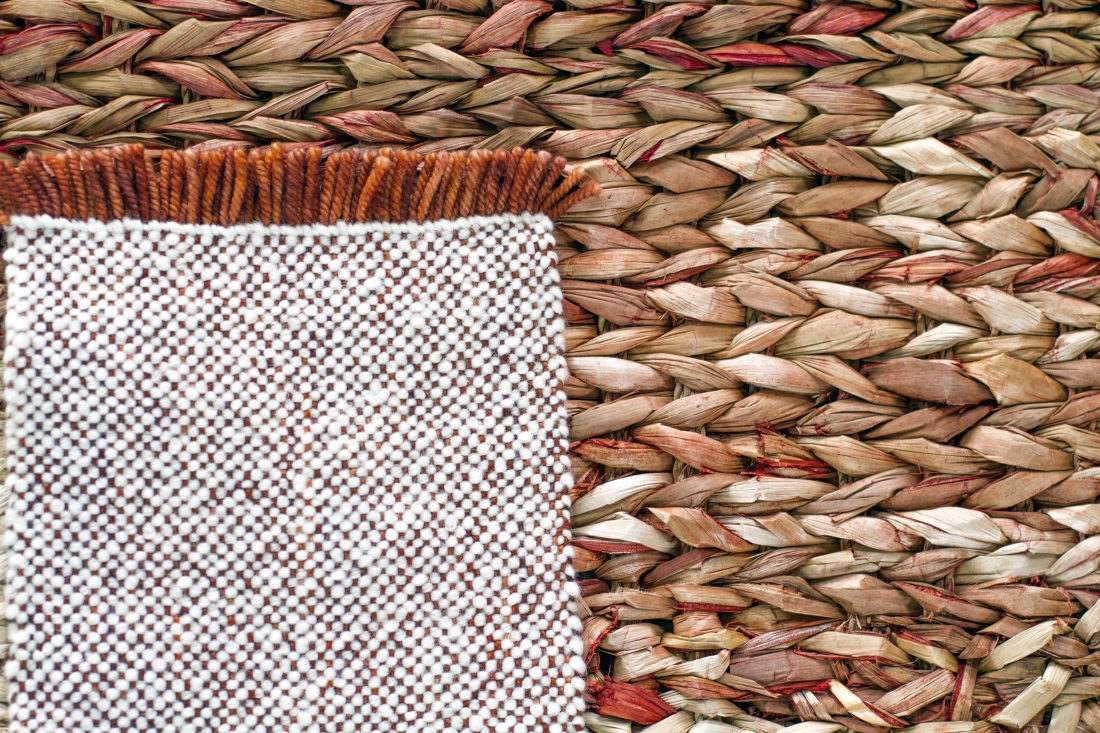
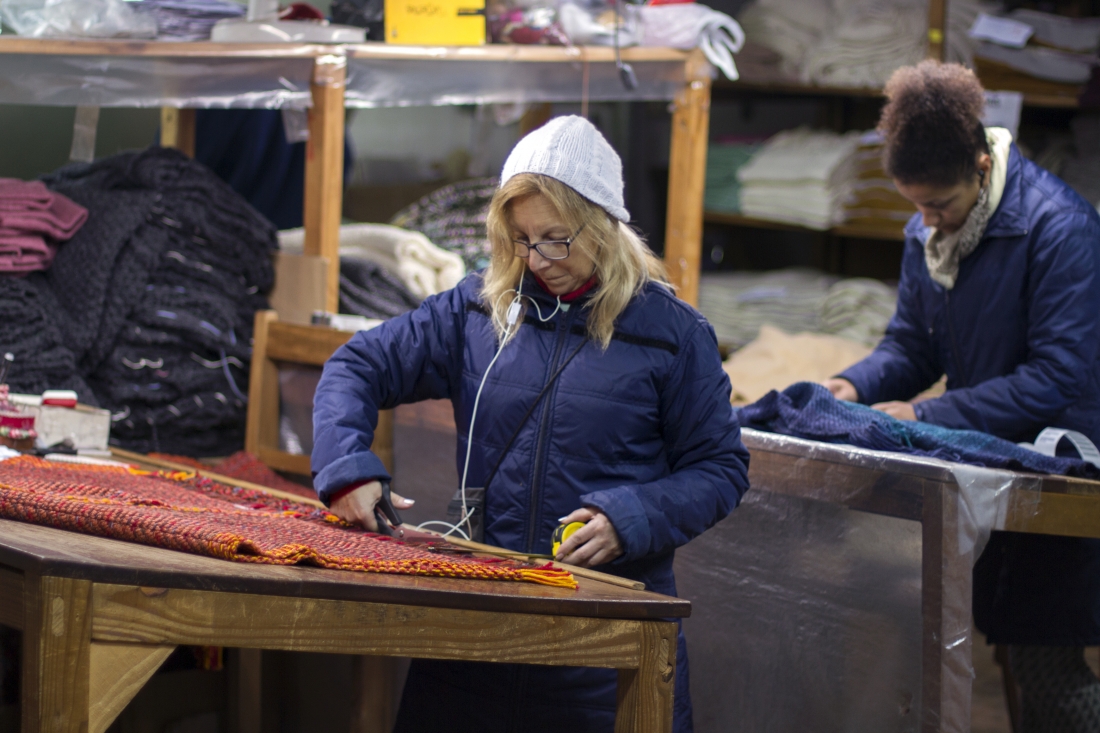
Artisans from Manos del Uruguay
Finding totora that was possible to knit was one of Graciella’s biggest challenges. Once found, it was dyed in a huge fire-heated pot outside before it was made into lengths of rope using a tapestry loom, and joined together when wet to make the form especially tight. Graciella says, "The knitting stitch I chose is very common in textiles disciplines but I make it using a basket making technique. It reminds me of my mother’s knitting. She used to do it with needles or with a machine. Here it is also used as a part of a saddle, and it’s called Jerga." She adds, "I enjoyed every stage of the process, the physical work, the mental dedication to solving all the problems that appeared."
The seat of Tutura has been woven by collective Manos del Uruguay, which provides job opportunities for rural women living in Uruguay. The collective provides them with work, materials and the tools to get making.
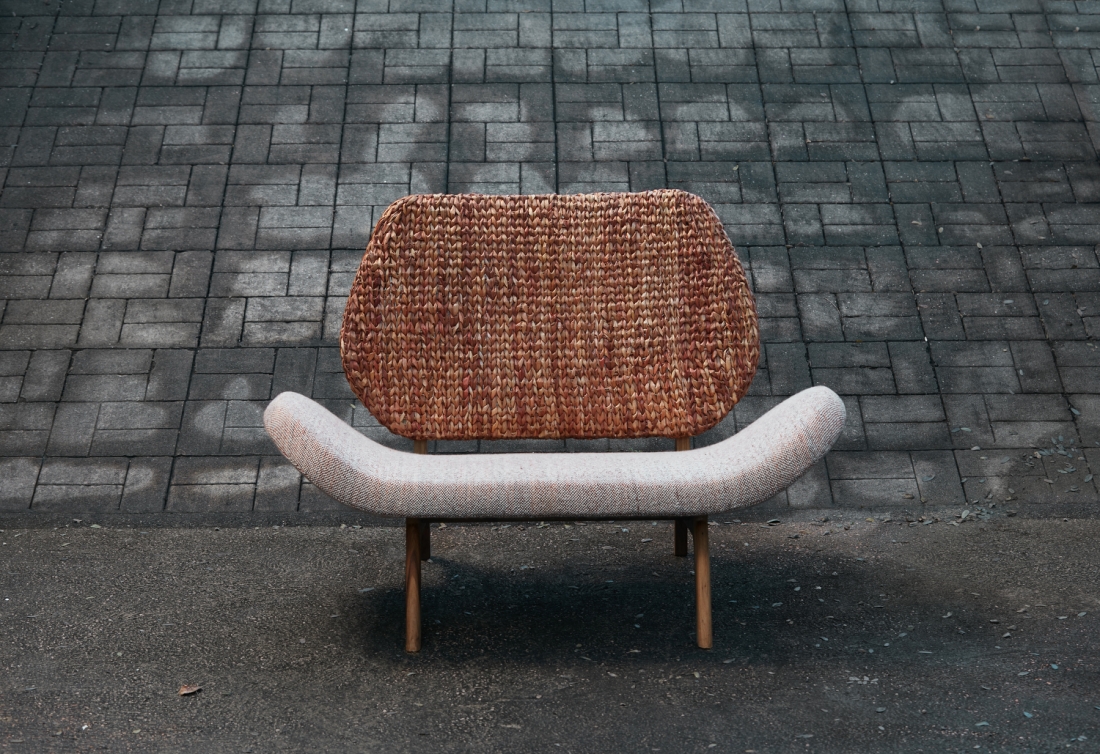
Tutura by Carolina Palombo
"The idea is to provide women with every single necessary thing so as they only have to knit without being worried about anything at all," says Ana de Prado from Manos del Uruguay. "Our artisans also arrange their schedules and have the flexibility to be able to attend their work and their family at the same time."
Uruguayan wool is known for its quality, and Manos tried different alternatives with local materials and different colours until it reached to the perfect fabric and texture. "It was great to collaborate with industrial designers Carolina and Matteo in producing a fabric that suited the seat of the chair, and at the same time that was as near as possible to the idea that they had in their minds."
Find out more about the six other designers involved in the groundbreaking exhibition, Hilos Invisibles at Aram Gallery, launching on 17 September, at thearamgallery.org.


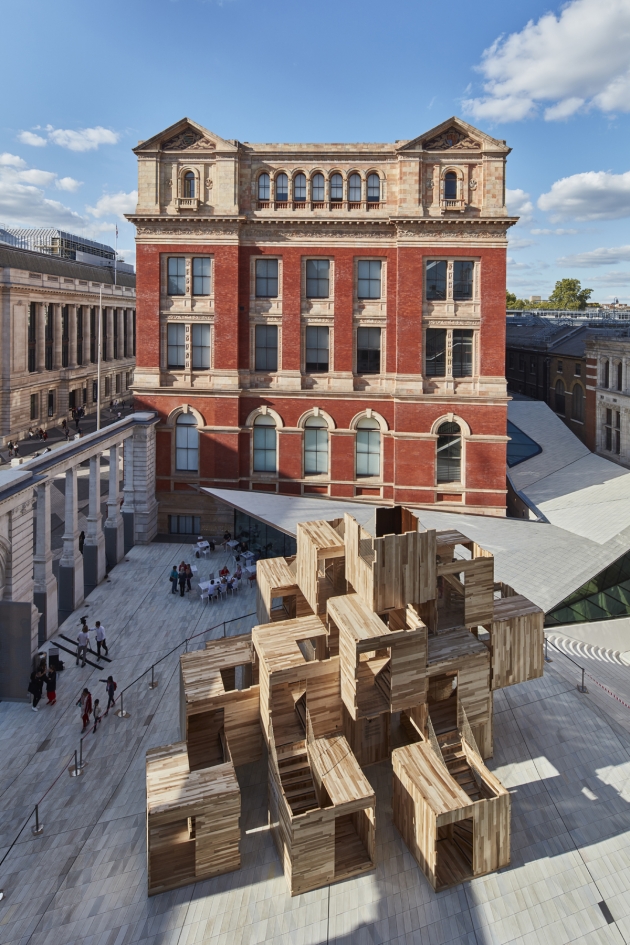

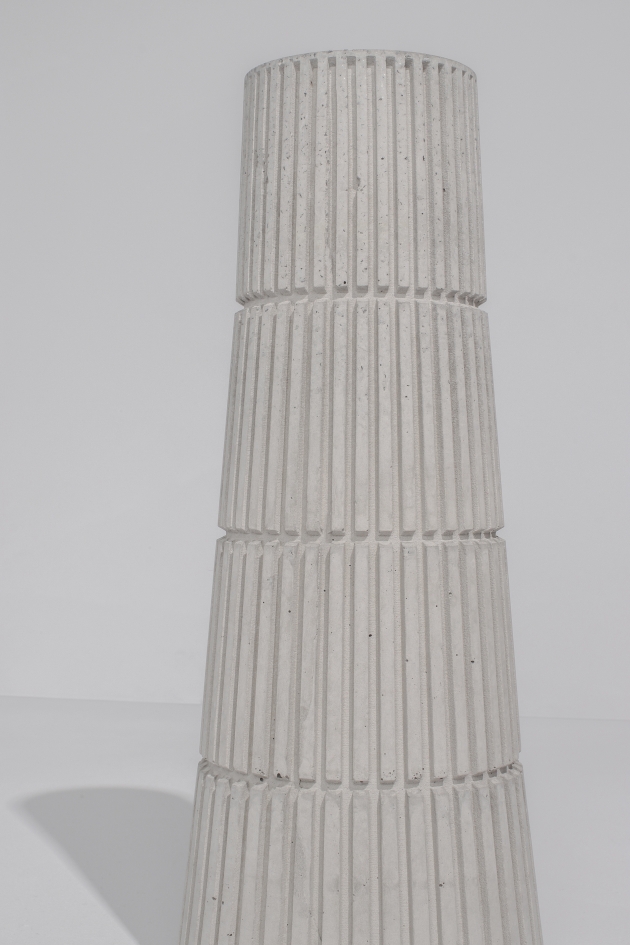
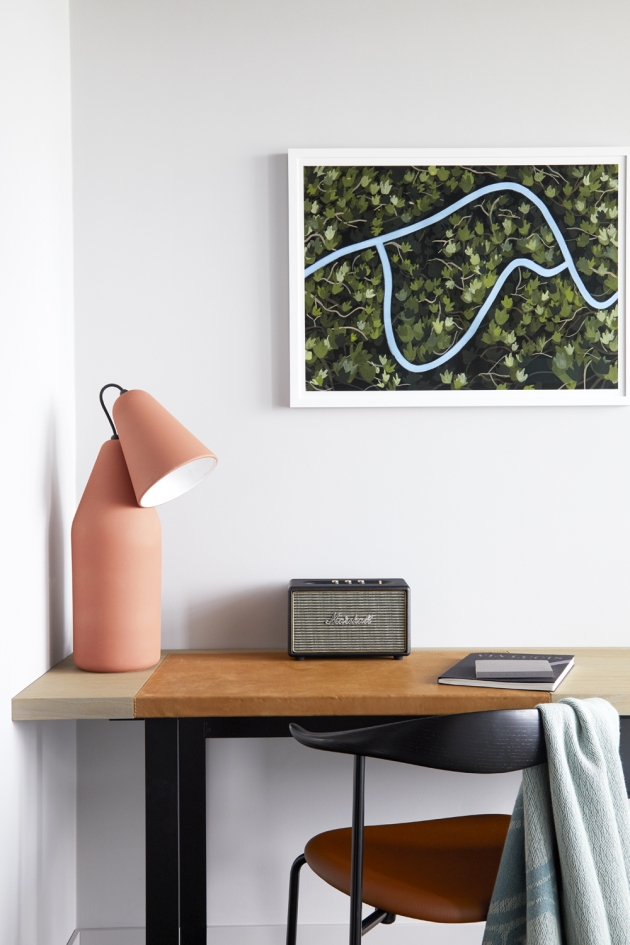
](https://www.materialsource.co.uk/uploads/articles/ae/ae5bdf8652f4fd867d8ba3078401d63674ec2ed9_630.jpg)

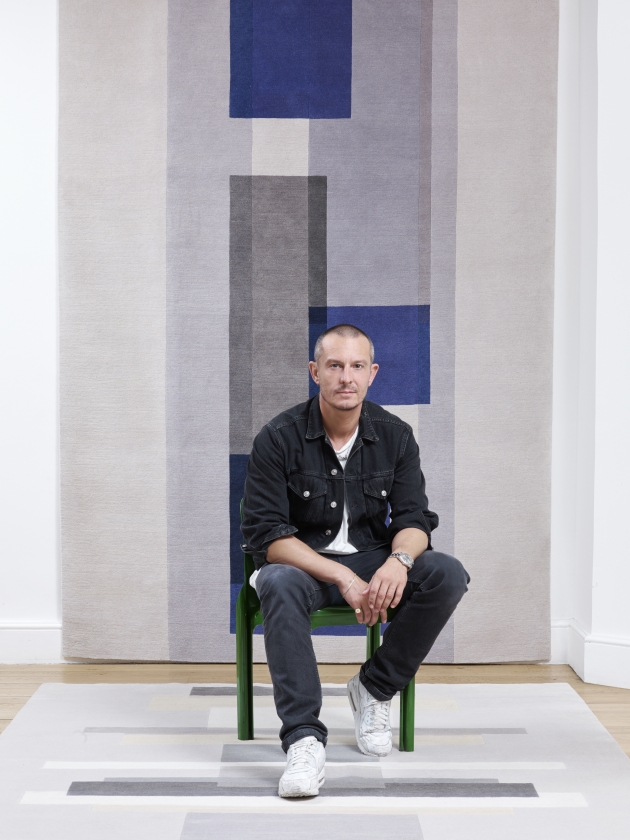
](https://www.materialsource.co.uk/uploads/articles/e3/e393f81c098bad623f4fa241f30796cf1bacca5d_630.jpg)